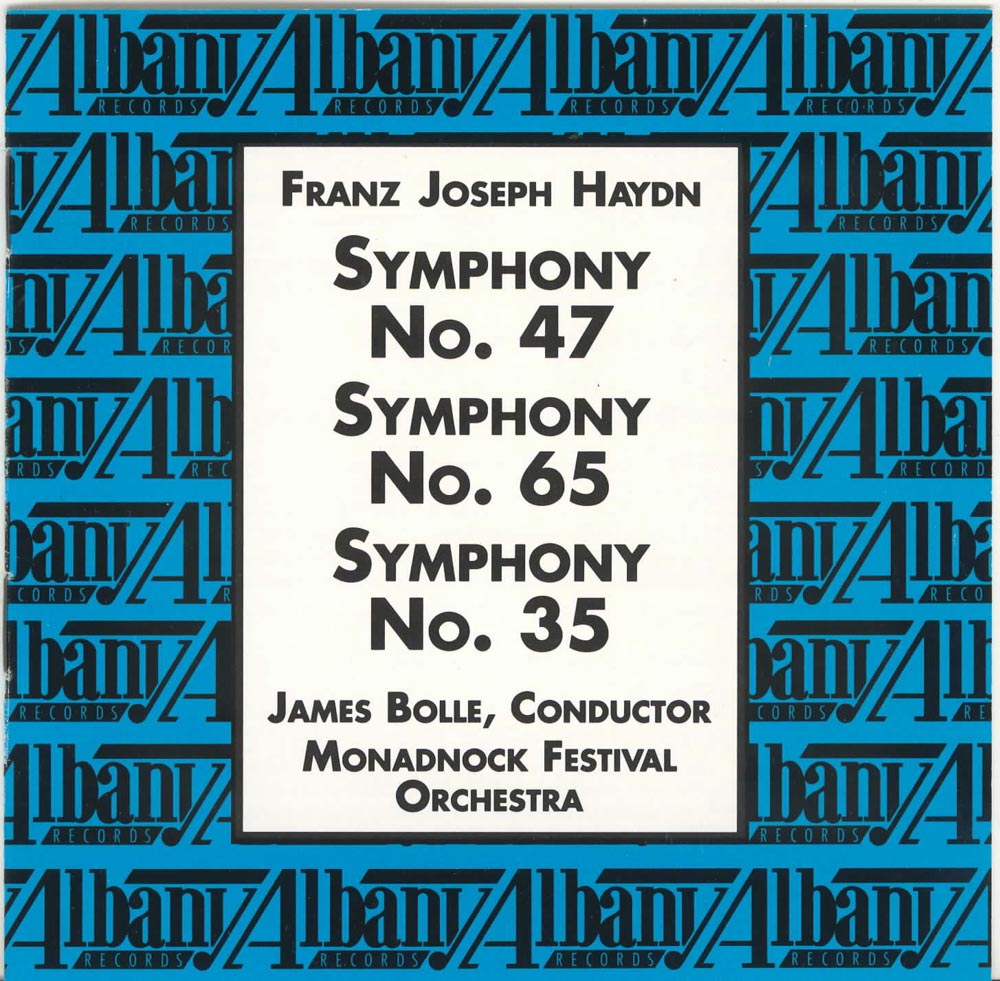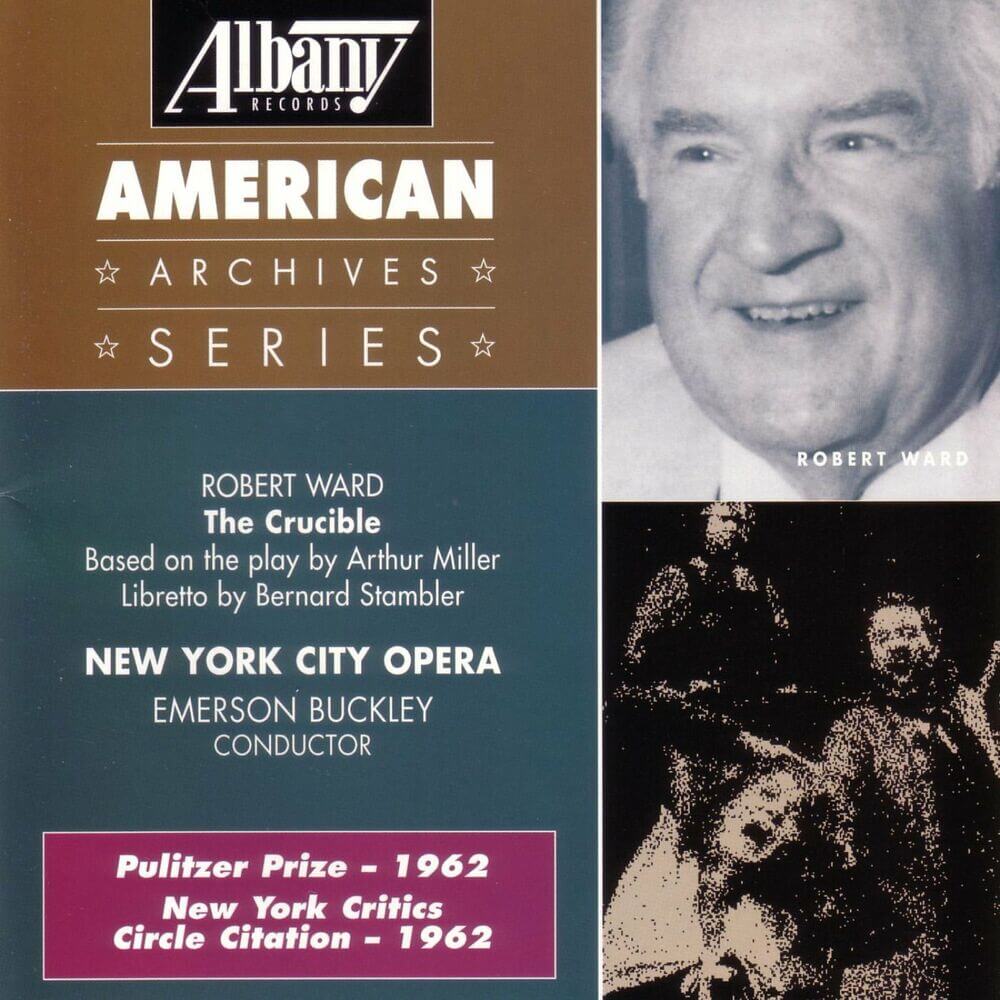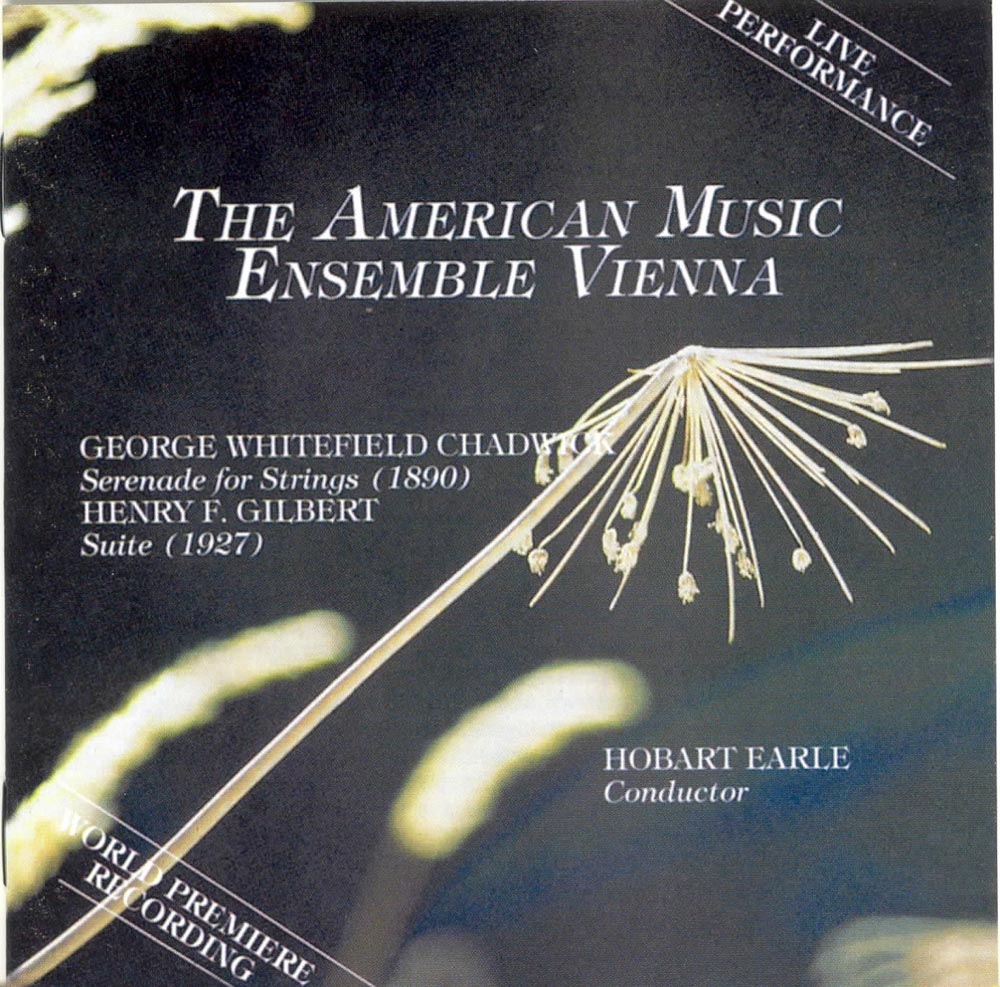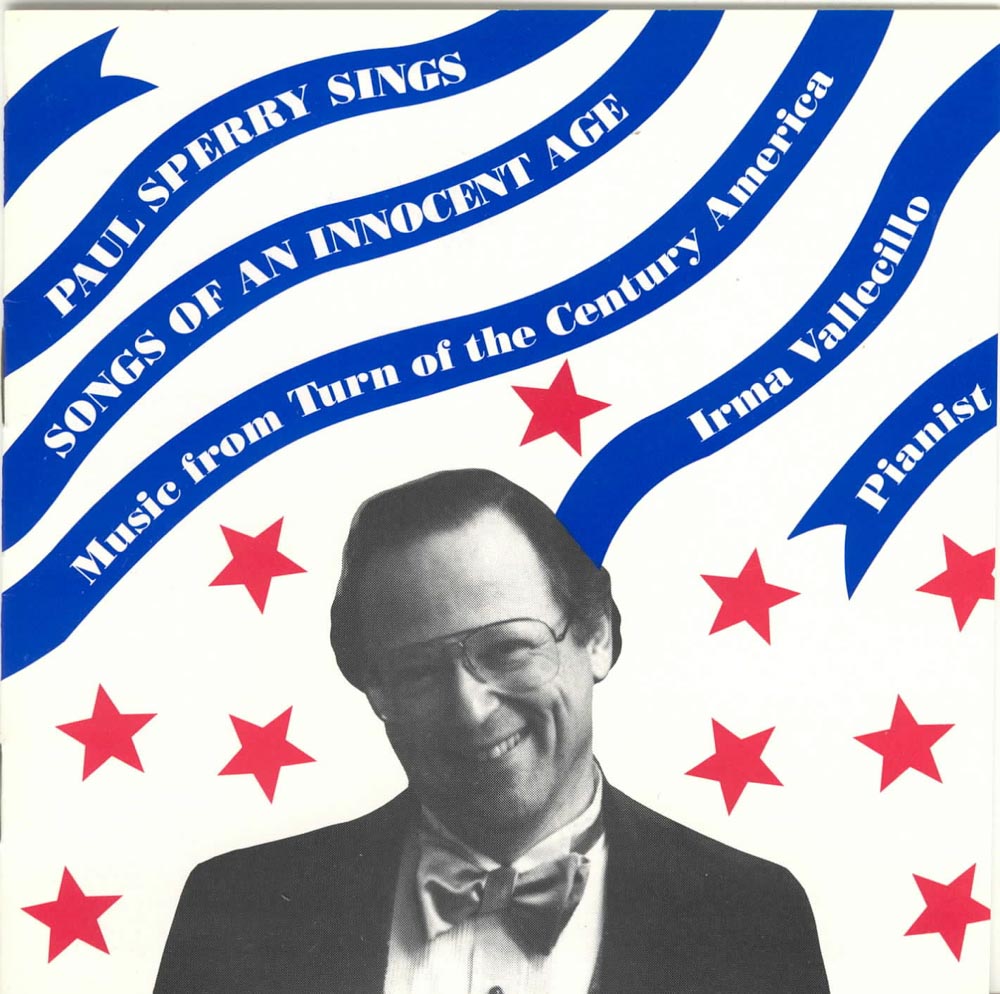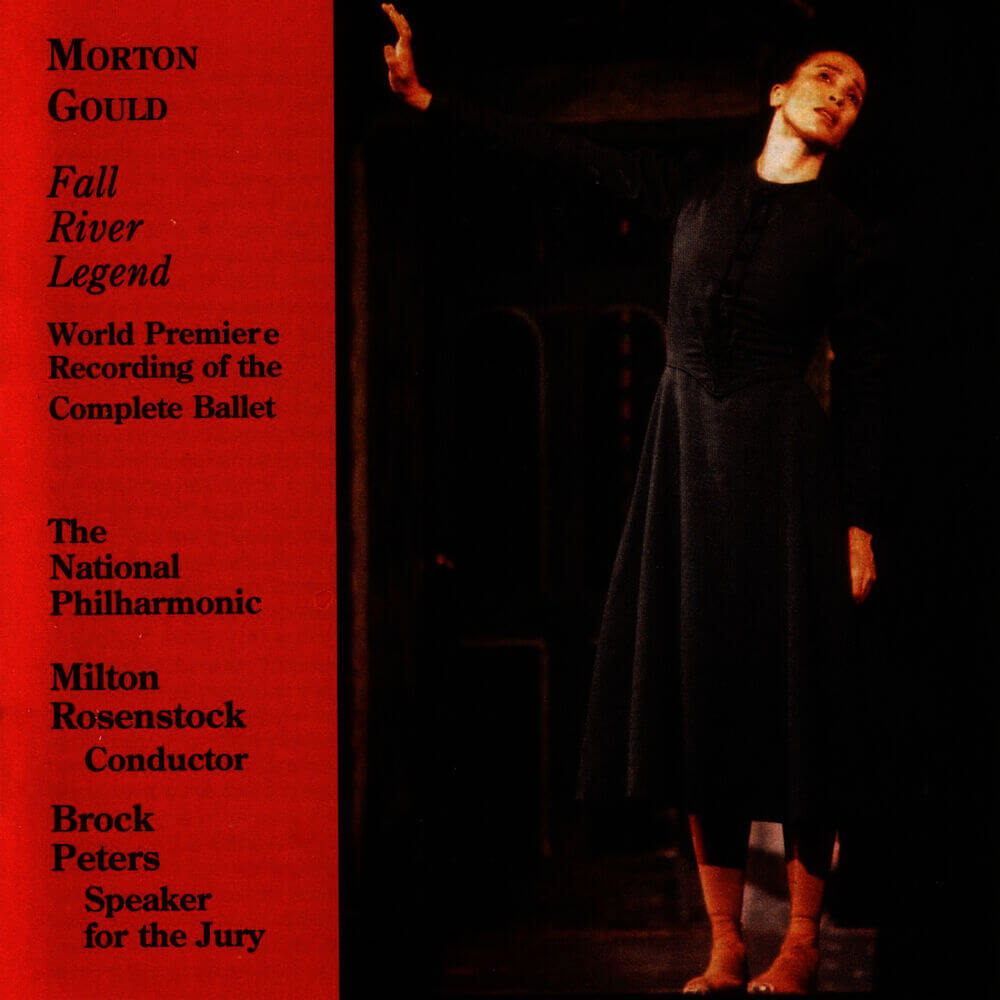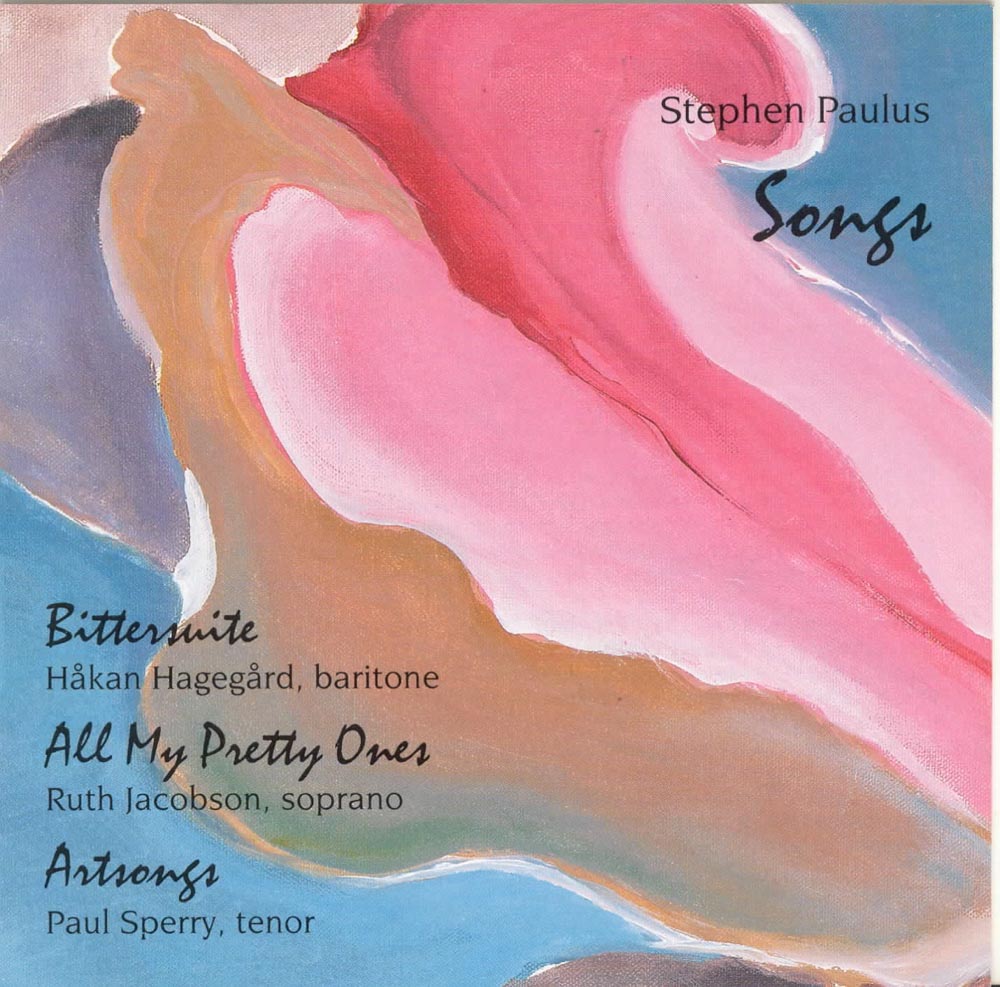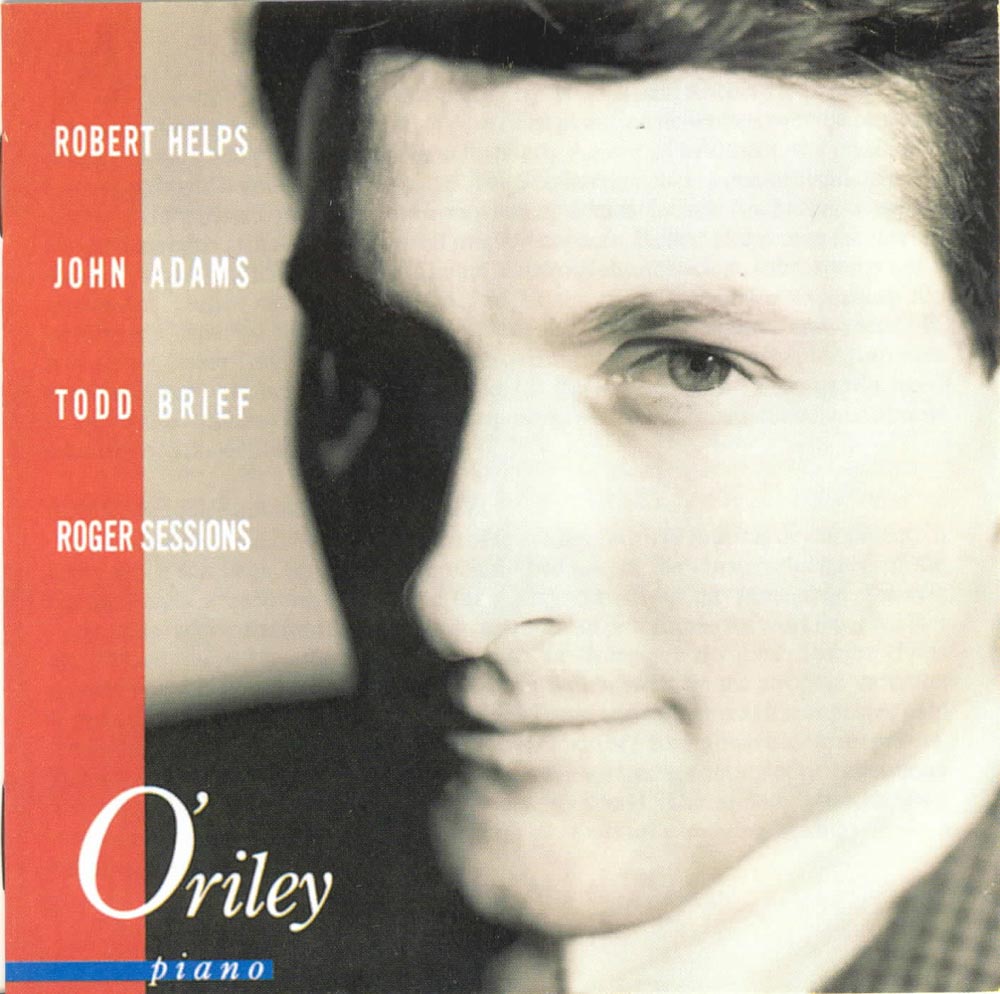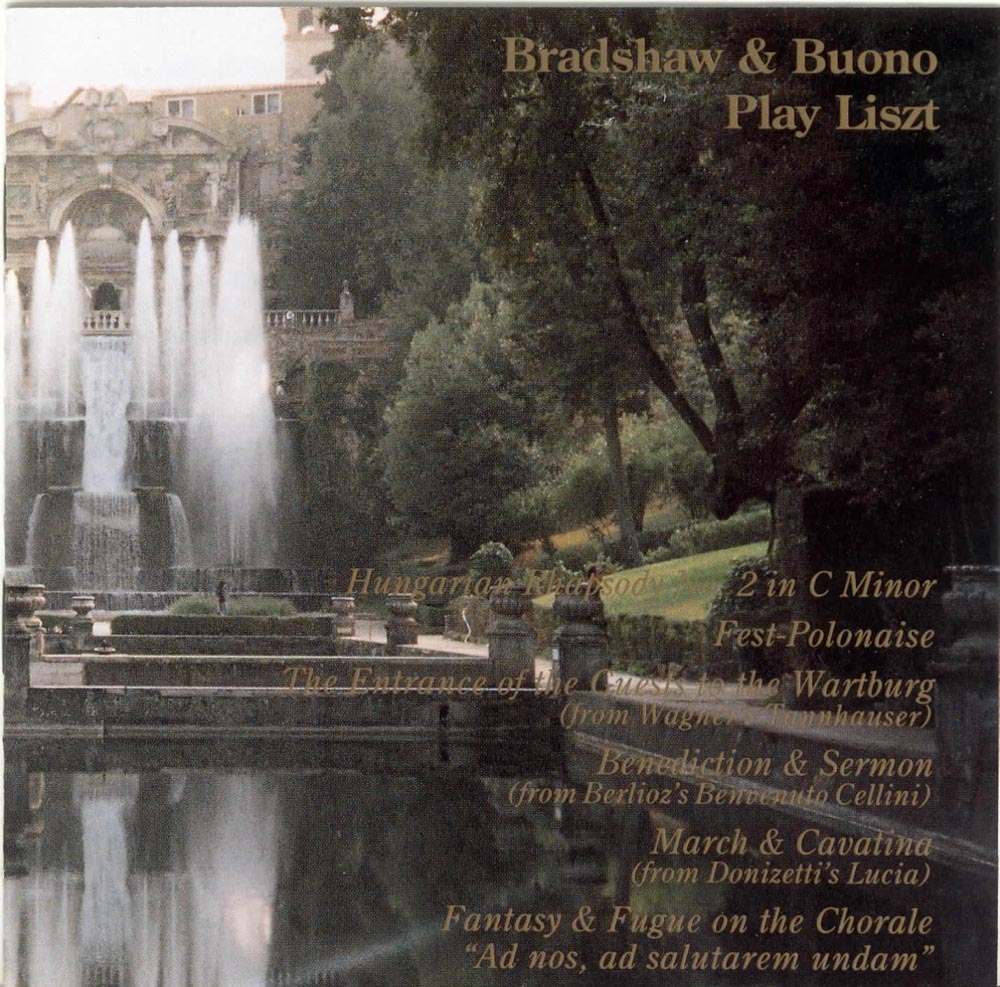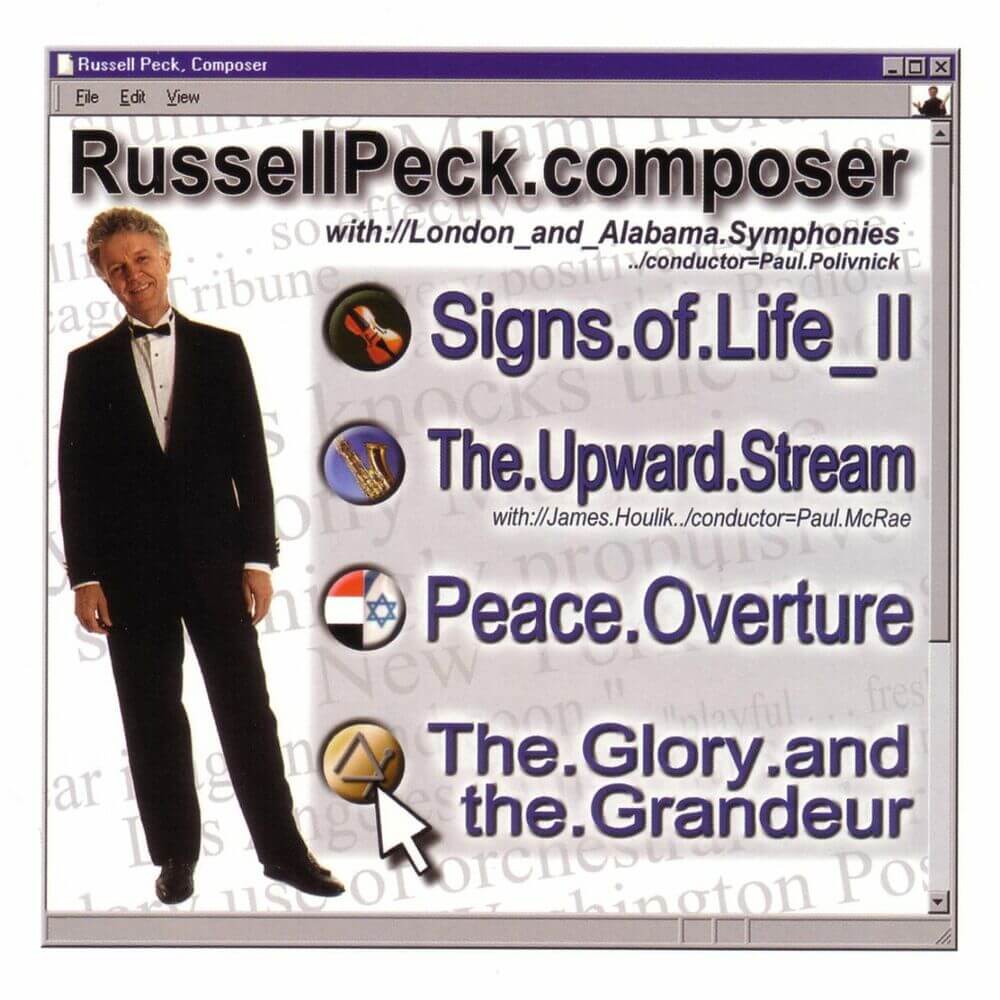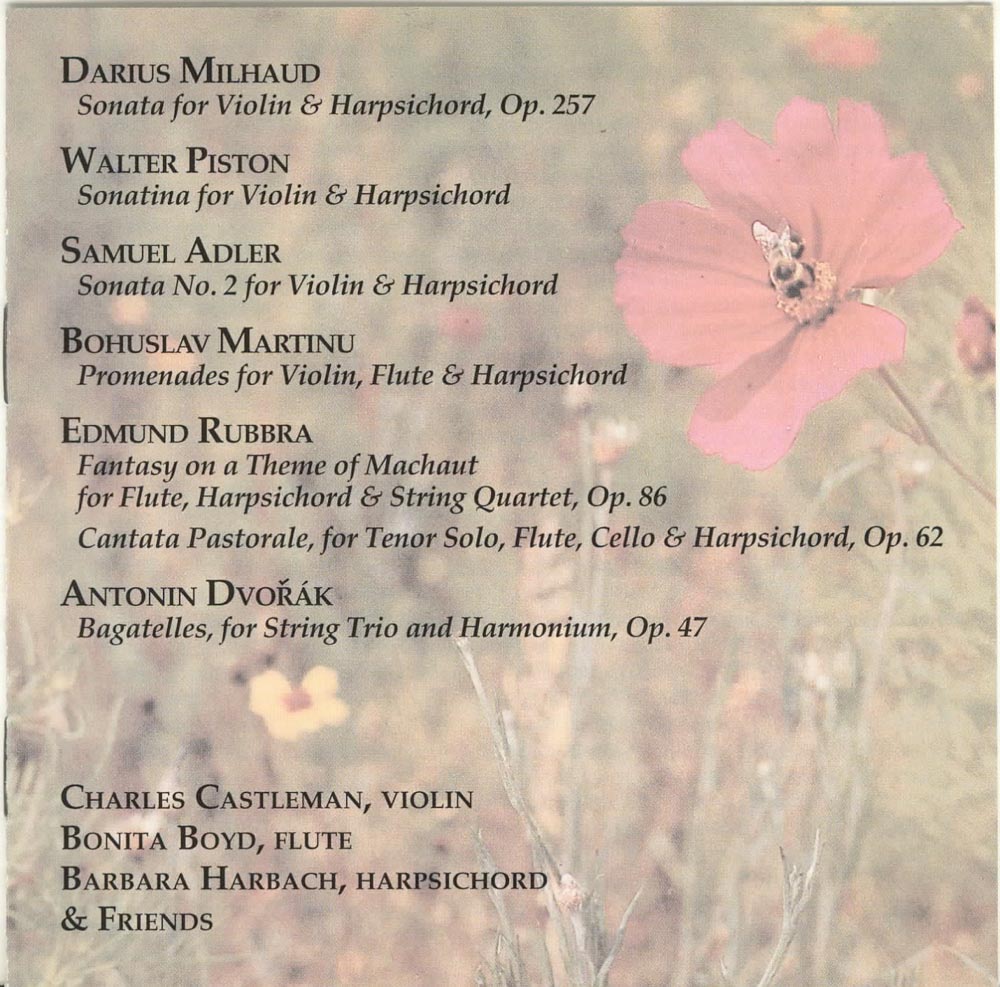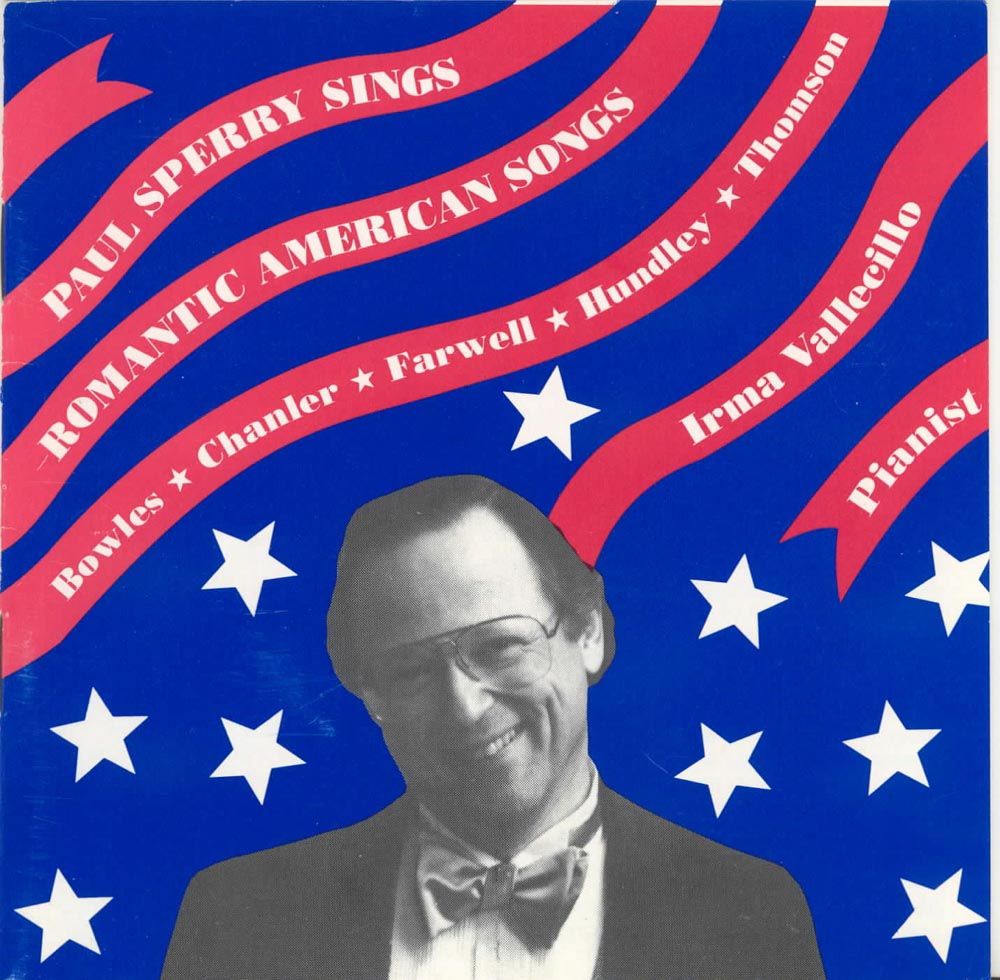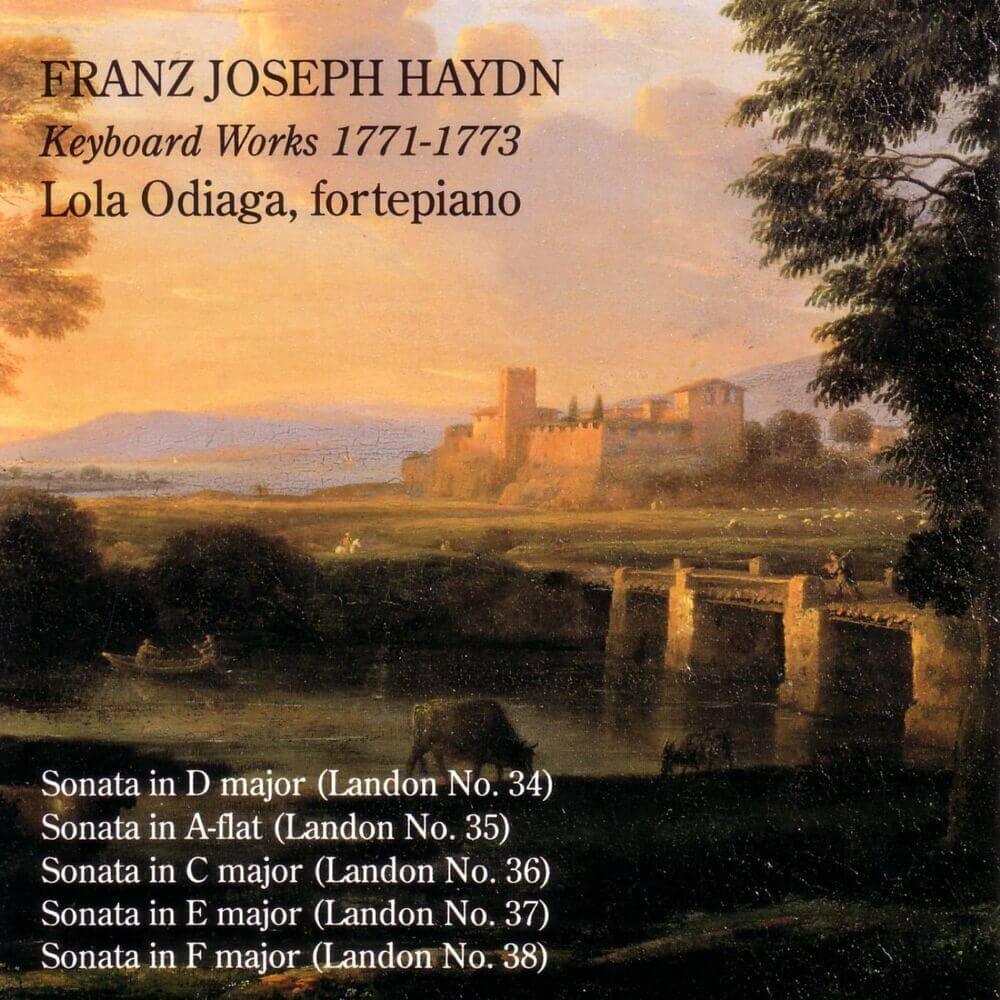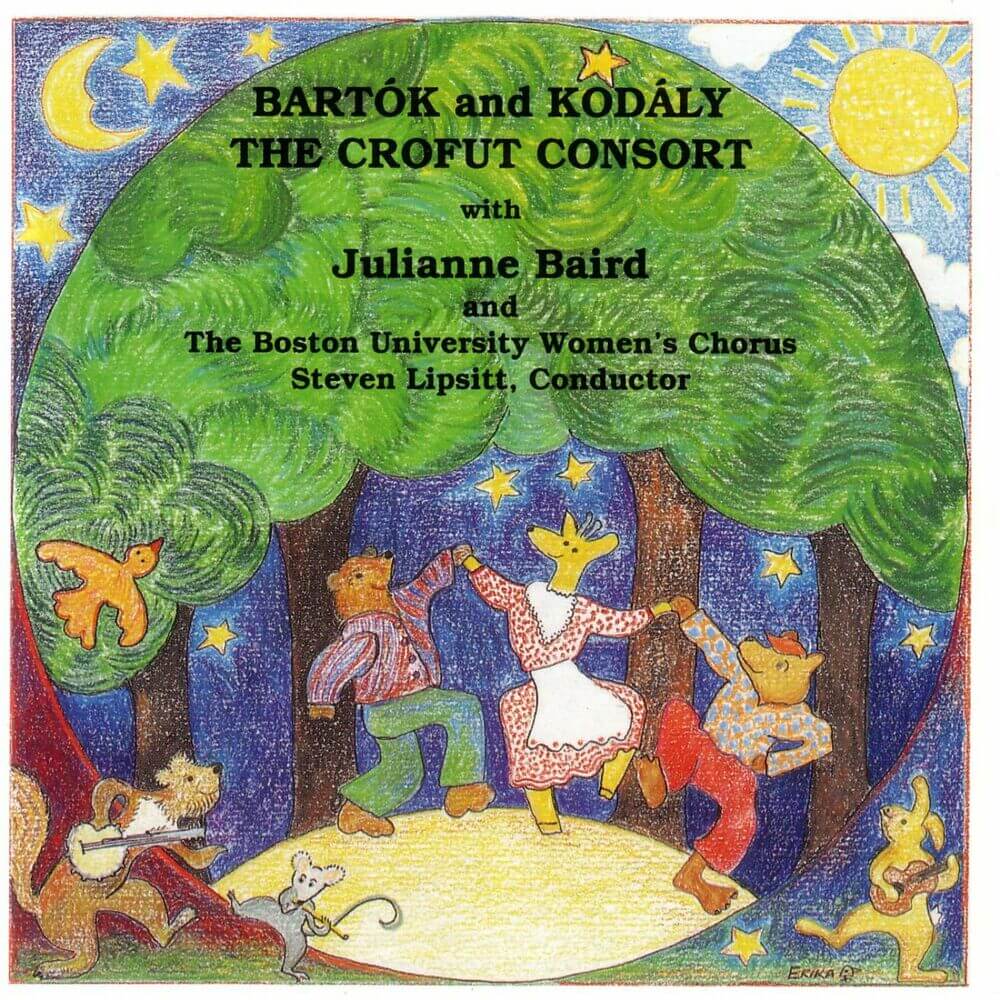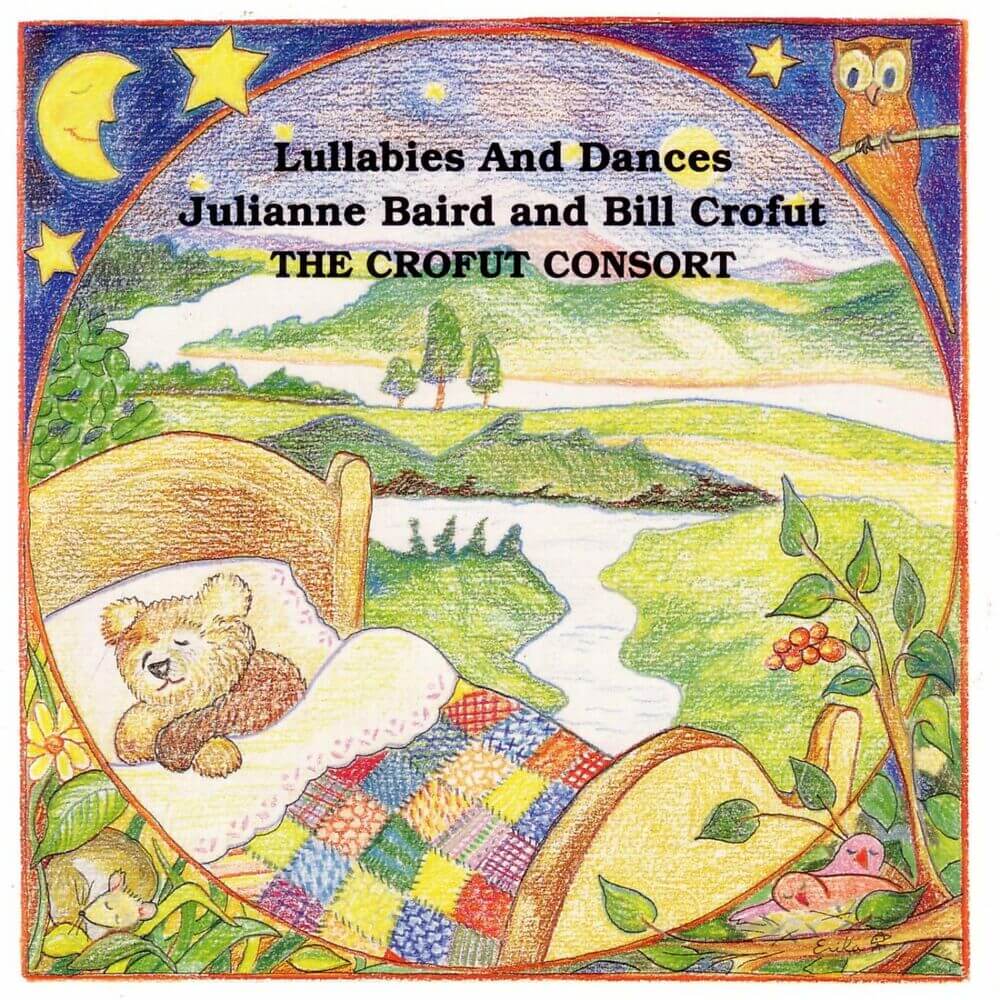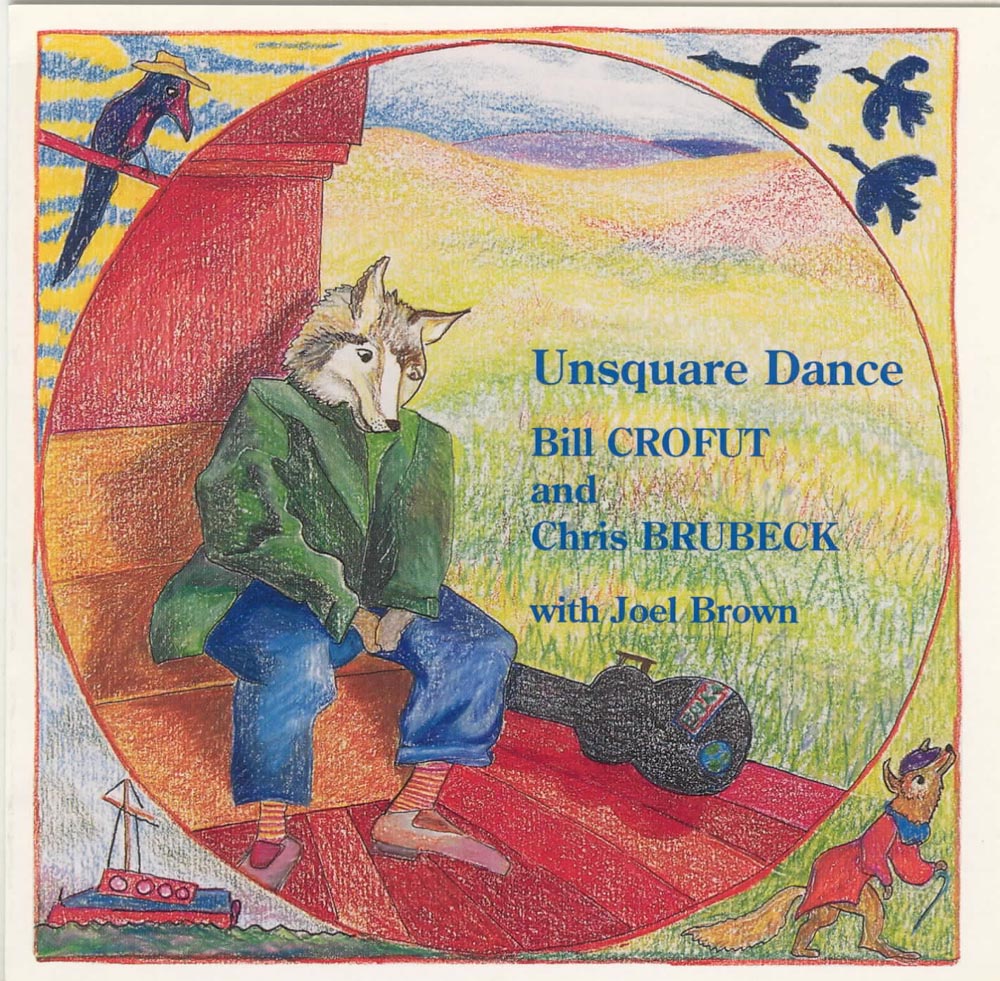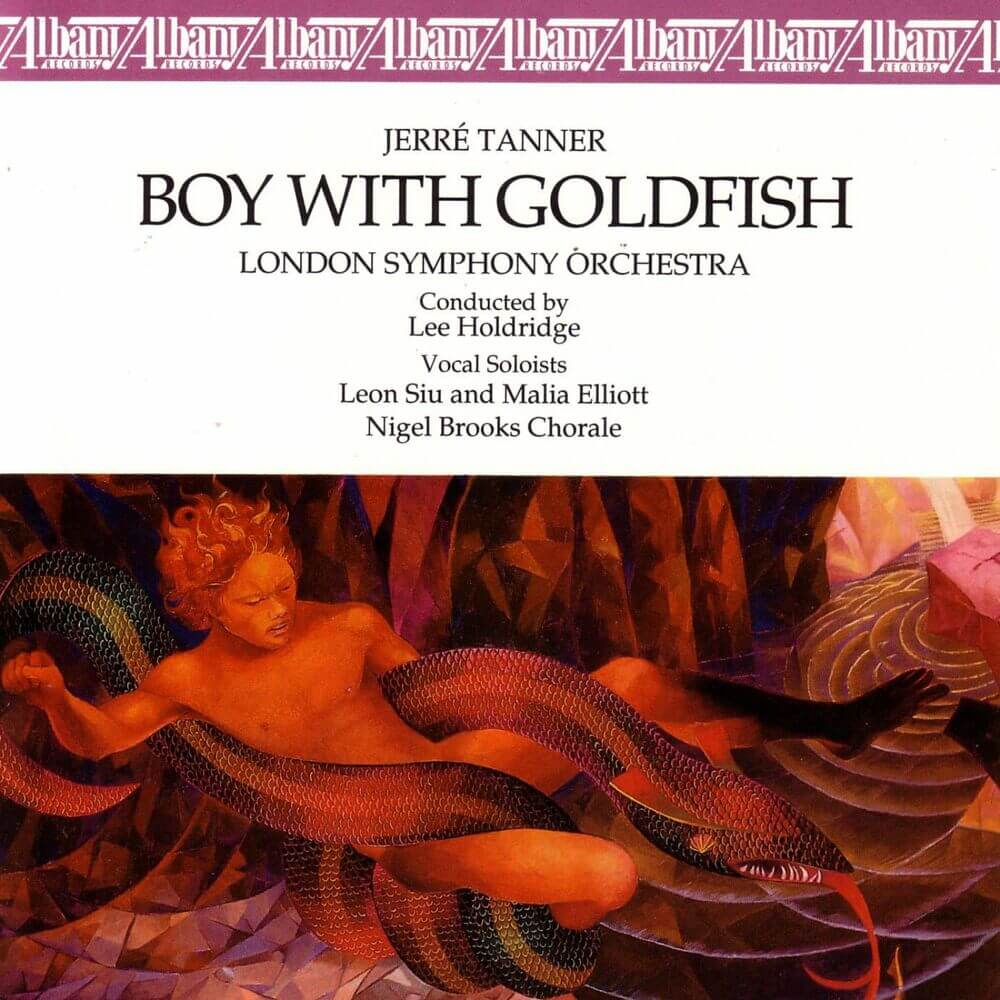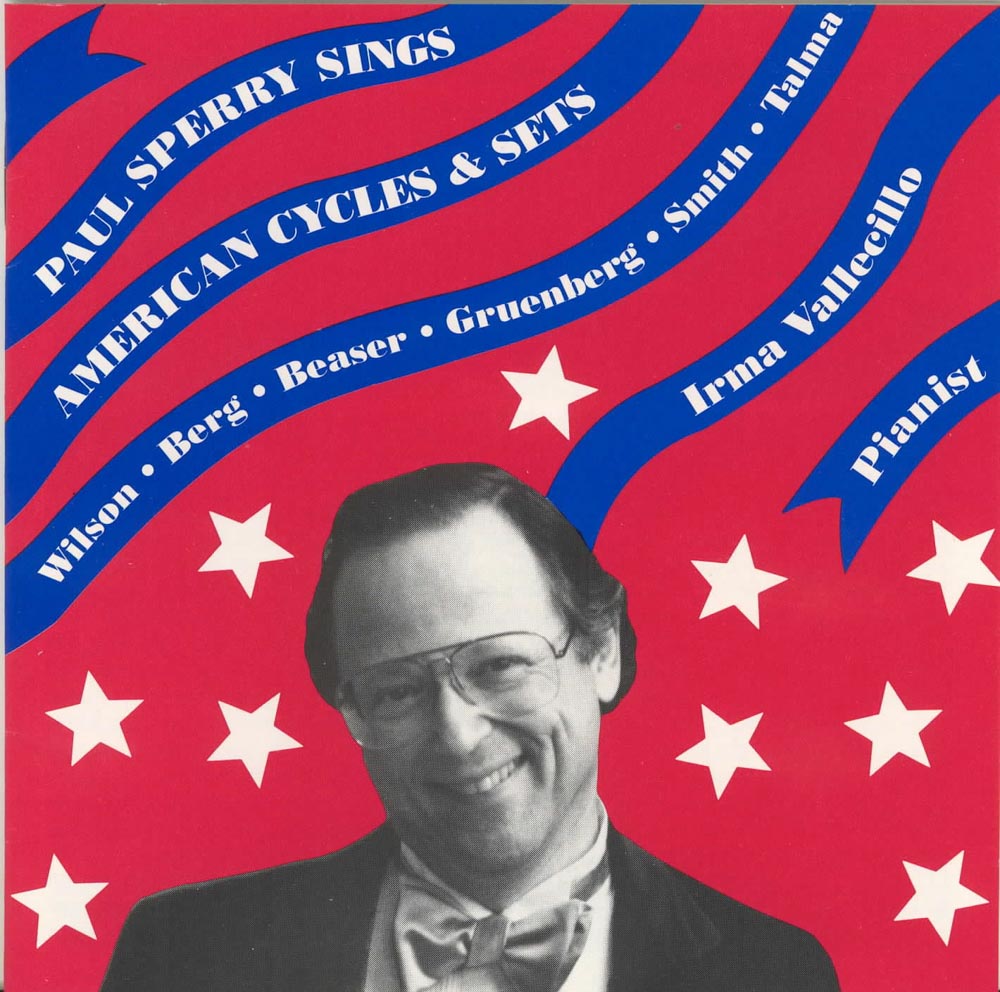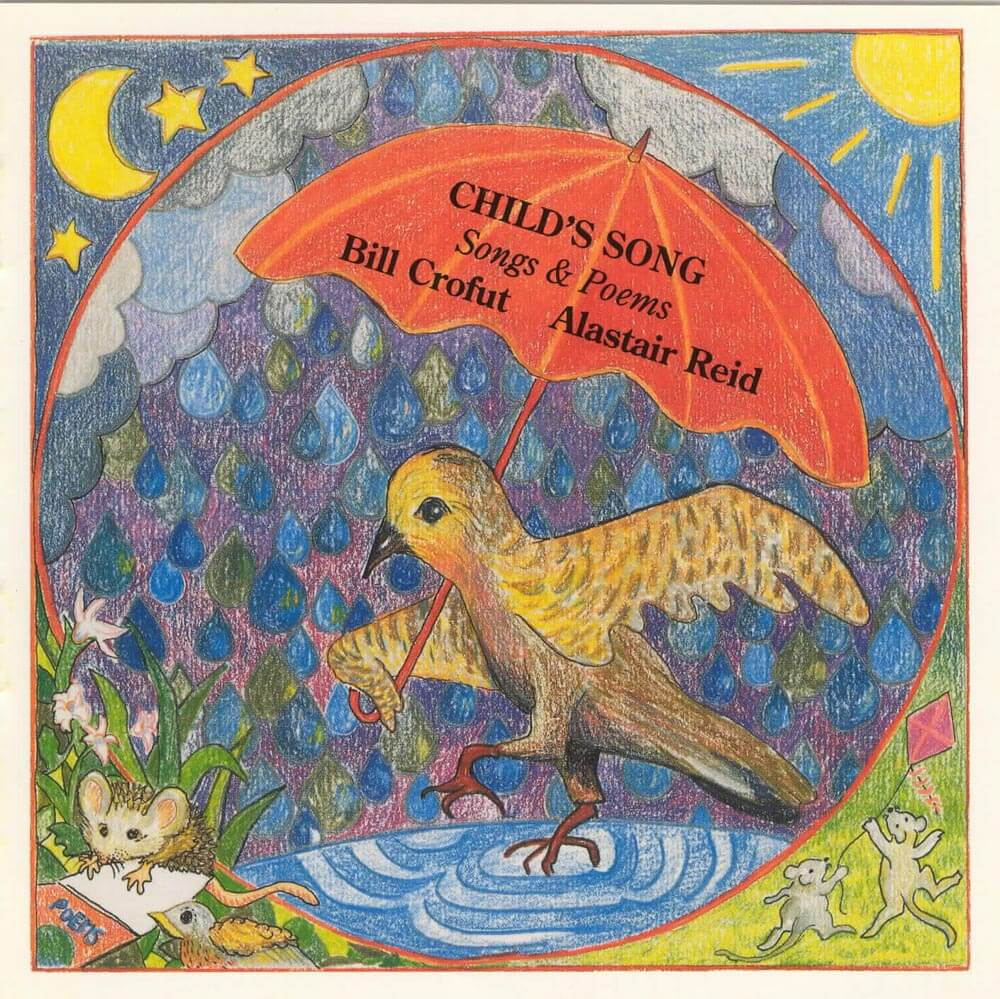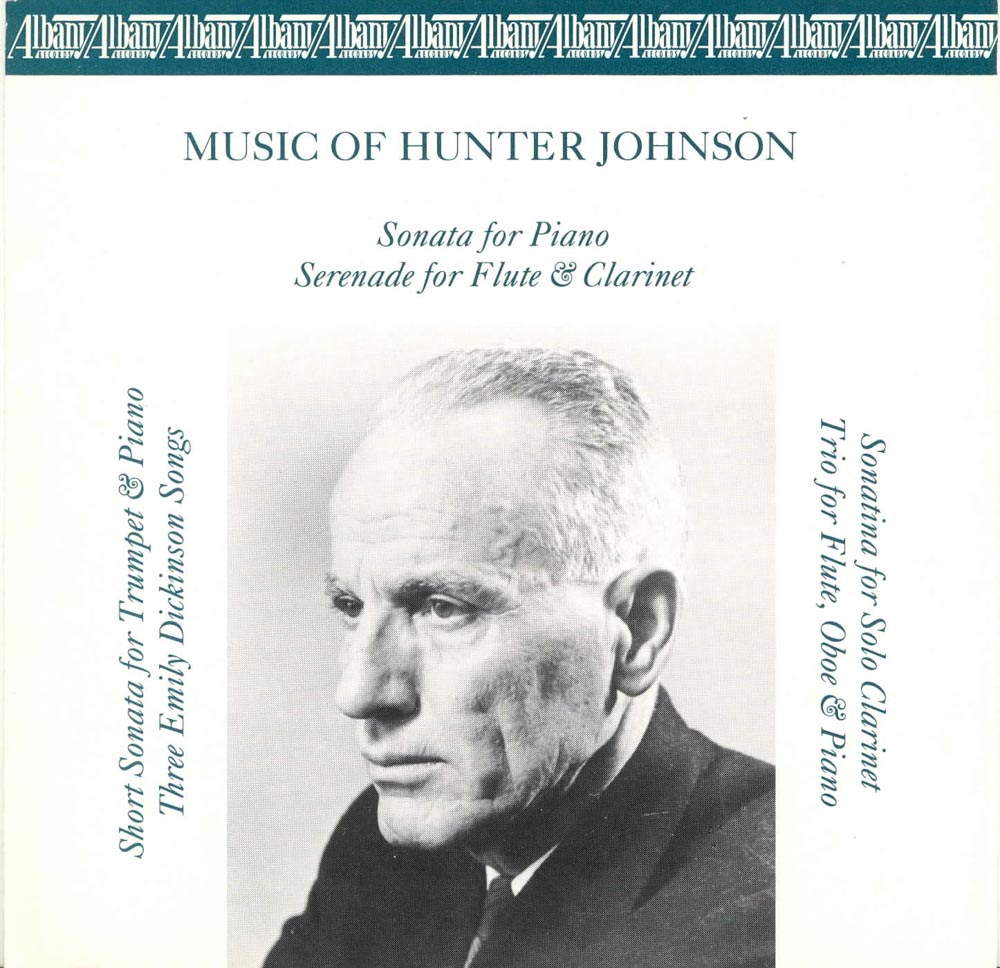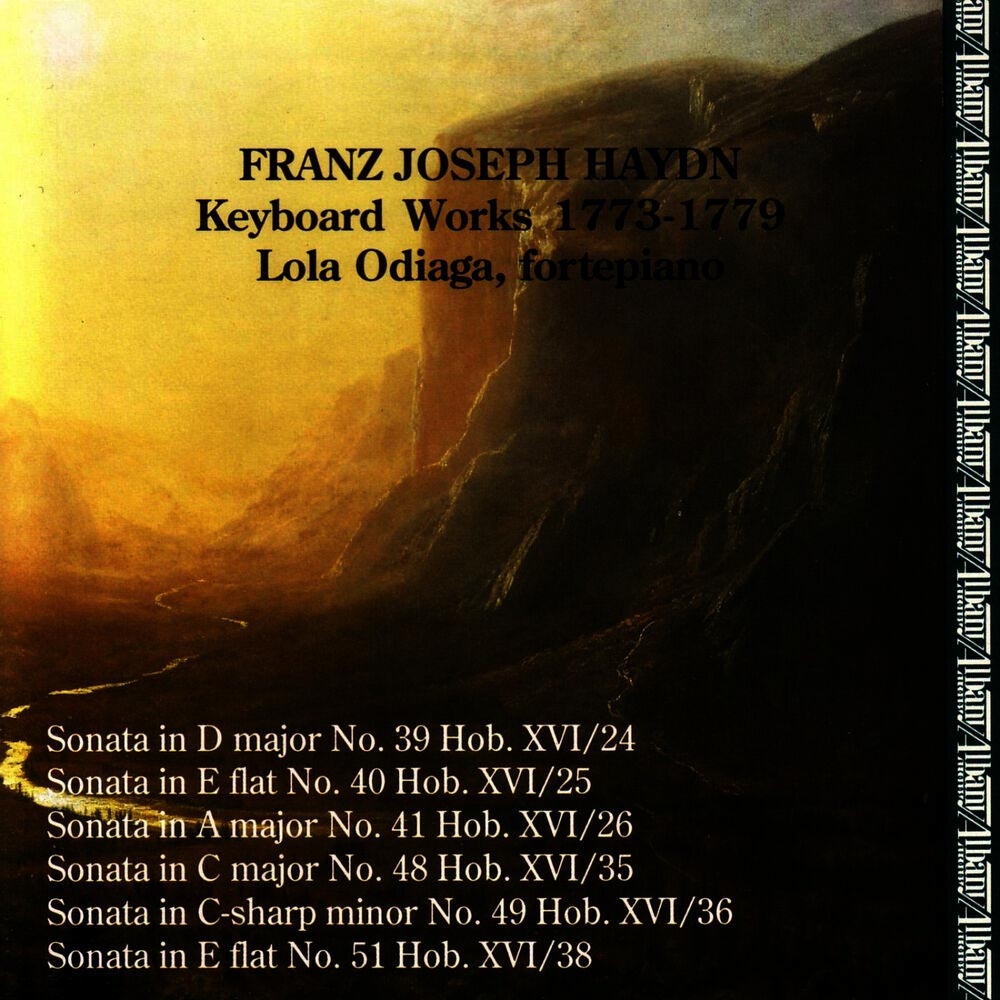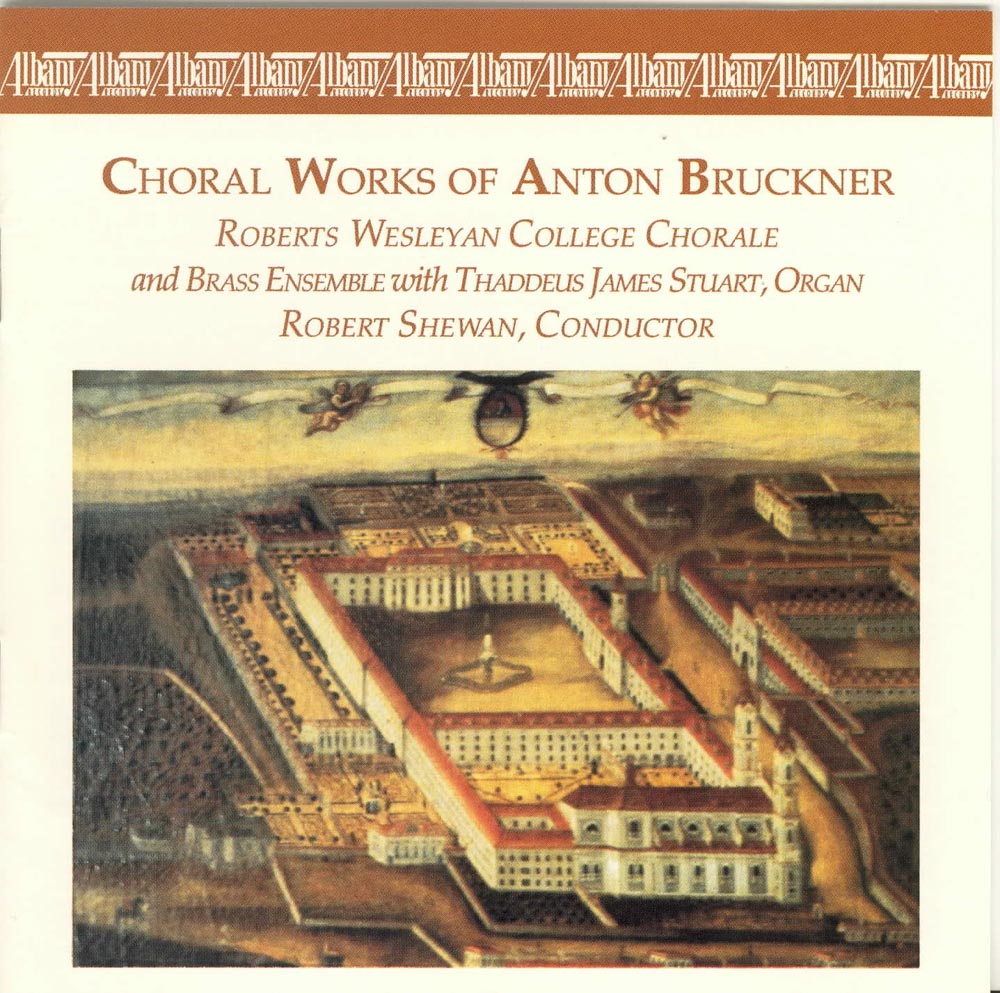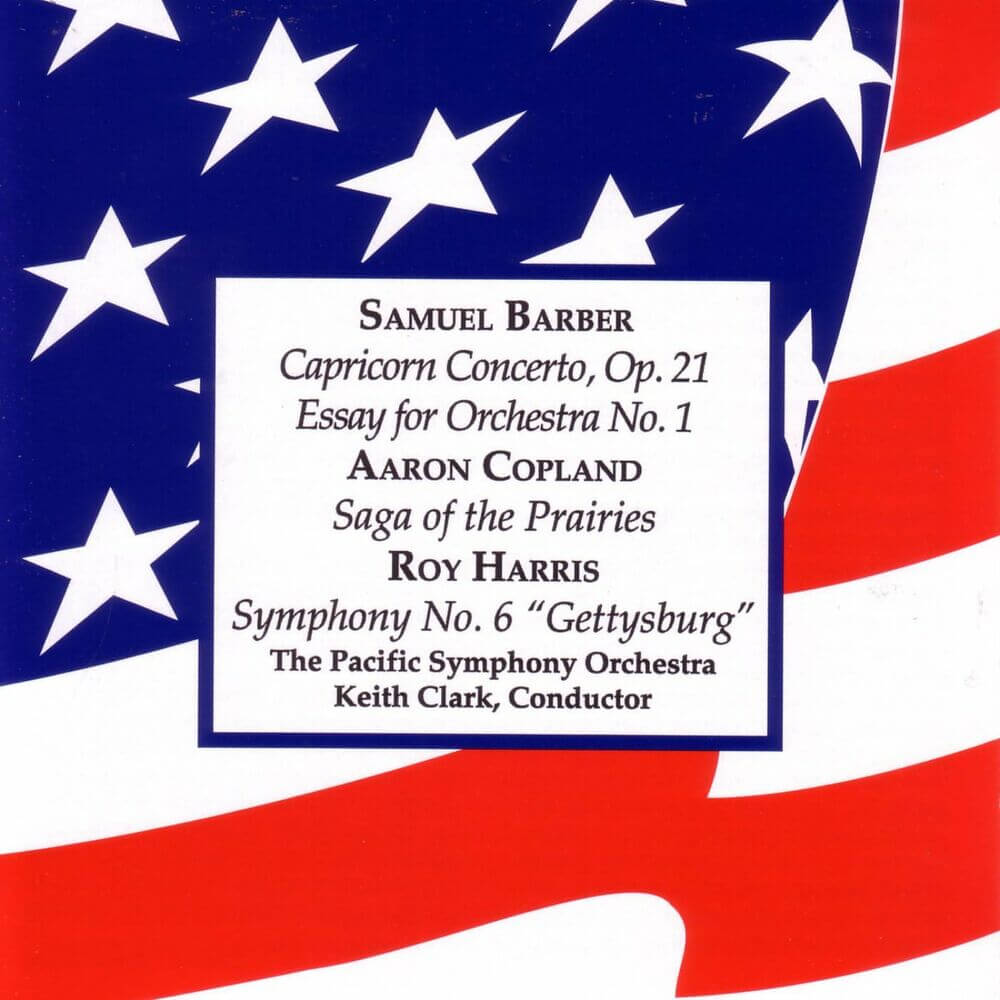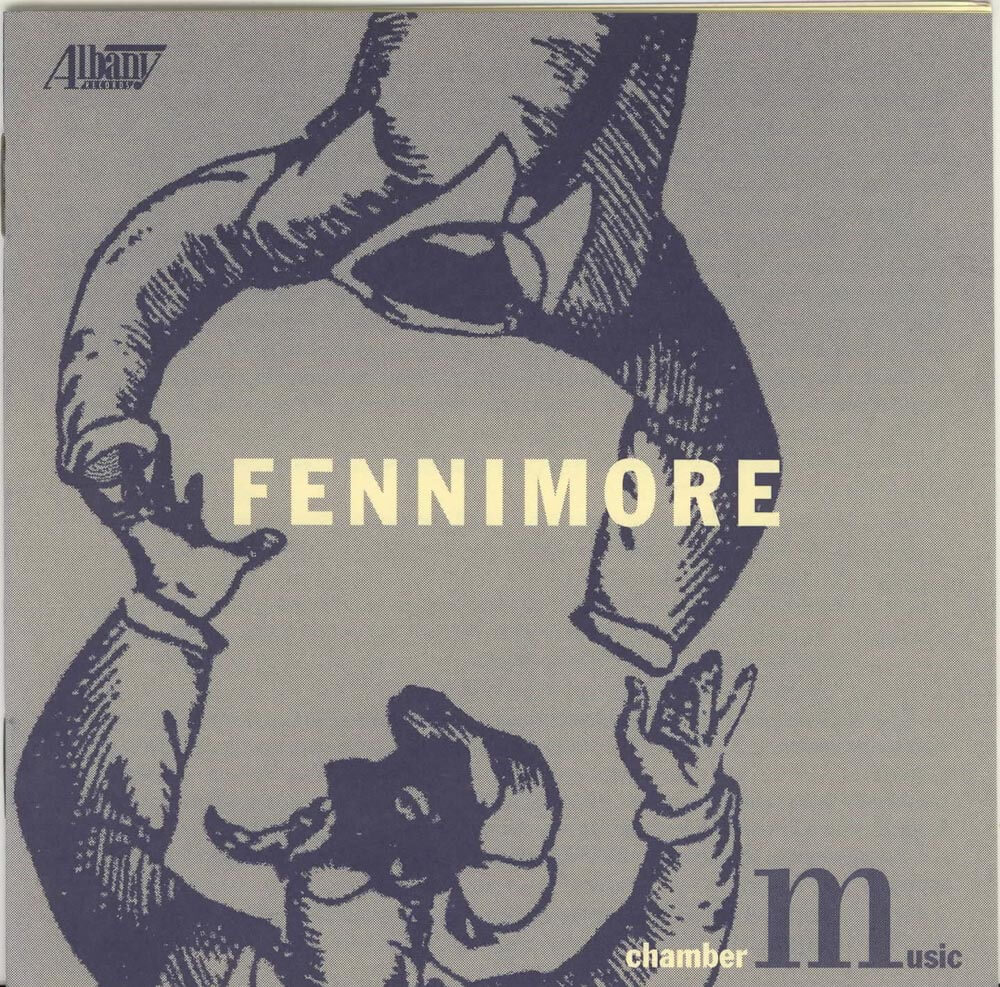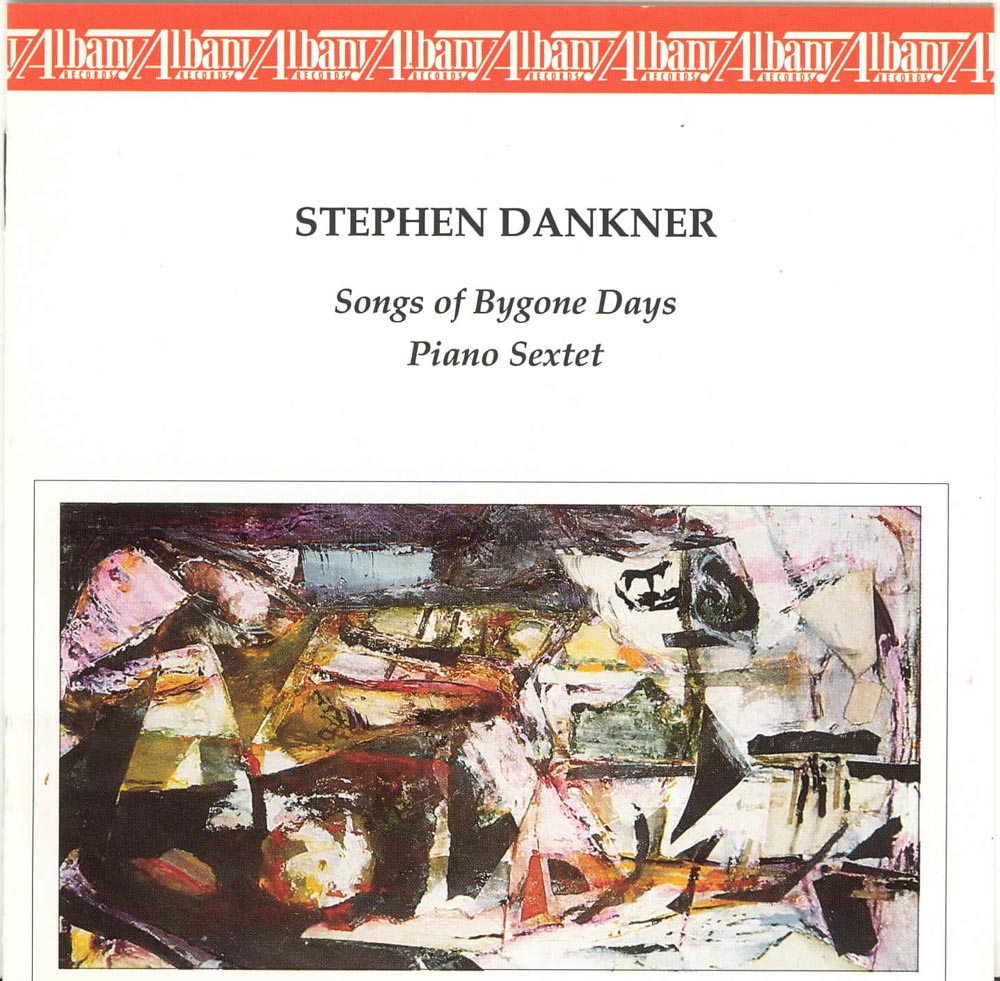Catalog #: AR0001
Release Date: June 1, 1988OrchestralPulitzer Prize winning composer Robert Ward was born in Cleveland, Ohio on September 13, 1917. He received his early musical training in Cleveland's public schools and graduated from the Eastman School of Music where he studied with Bernard Rogers and Howard Hanson. His graduate work was undertaken at the Juilliard School studying composition with Frederick Jacobi and conducting with Albert Stoessel and Edgar Schenkman. During that time he was also a student of Aaron Copland at the Berkshire Music Center. Before and after World War II, Ward served on the faculties of Queens College, Columbia University and the Juilliard School, later becoming music director of the Third Street Music School. In 1956 Ward became the Executive Vice President and Managing Editor of Galaxy Music Corporation and Highgate Press. In1967 he was named President of the North Carolina School of the Arts and in 1979 became Mary Duke Biddle Professor of Music at Duke University.
Catalog #: AR0005-06
Release Date: December 1, 1988ChoralAlmost from the moment of its first performance, Haydn's The Creation was ranked as his greatest single achievement. For all his brilliance in composing symphonies, string quartets, operas, and masses over a period of decades, Haydn had never produced a composition of such scope, such variety, and such immediacy. Its text and Haydn's music gave the oratorio near-universal appeal, making it accessible and moving to listeners of every class and even of strongly opposed religious and political views. The Creation was as enthusiastically received by Vienna's Catholics as by her freemasons; Berlin's Lutherans and London's Anglicans and the revolutionary theists of Paris hailed it with as much fervor as the Viennese. For many it ranked with Handel's Messiah as one of the two greatest oratorios - and perhaps greatest musical compositions - ever written.
Catalog #: HJ0001
Release Date: June 9, 2014Arguably, America’s greatest cultural contribution to the world has been jazz. It may be argued with equal force that one of the most important shrines in the history of jazz was Minton’s Playhouse in Harlem. Founded in 1938, Minton’s Playhouse became the setting for a revolution in jazz. Virtually everyone who was anyone in the world of jazz made his or her way to Minton’s during this period. While Minton’s is most famous for the seminal role it played in the Bebop revolution of the 1940s, the club had a vital existence through the early 1960s as a magnet for musicians and continued to operate until 1974, when a fire led to the abandonment of the Cecil Hotel where Minton’s was housed. Now, some 40 years later, Minton’s is back. Minton’s is an ultra-sophisticated jazz supper club that pays homage to its musical heritage with nightly concerts on the venue’s original stage presented by a group of veteran musicians. This recording offers the best of the new Minton’s with live recordings, celebrating its roots with an eye towards the future.
Catalog #: TROY0018
Release Date: August 1, 1989OrchestralIn their different ways, the three symphonies on this recording show something of Haydn's experimental inclinations during the period in which they were written (the earliest being composed in 1767 and the latest in 1776). Among the hallmarks are sometimes an exaltation of vivid effect at the expense of formal and harmonic fluidity: dynamic contrasts are heightened, harmonic progressions emboldened, rhythms teased. There is growing contrapuntal sophistication, too, and in one movement each section is to be played both forward and backward.
Catalog #: TROY0023
Release Date: December 1, 1989VocalJoseph Fennimore lives, composes and performs in the Albany, New York area. This release is the perfect introduction to his music. As the title suggests, Berlitz: Introduction to French has a text which is taken from the "Berlitz: French for Travelers." As a song cycle, the songs depict the adventures of an American tourist in France. As music, they show Fennimore's absolutely delightful sense of humor. Inscape is defined by Hopkins as the particularity and essence of any object or occasion discovered by the poet after keen emotional involvement and careful scrutiny. The Seven Songs of Inscape are not a cycle but a group of settings that sprang from Fennimore's admiration for Hopkins' poetry and sympathy with Hopkins' belief that our sorrows mainly spring from within, while joy is to be found in spiritual harmony with the beauties of the physical world. The settings were composed in 1973 and 1977. The Six Songs were composed in 1976, 1977 and 1984. Eventide is based on a short story of the same name by James Purdy. The composer adapted the libretto. The opera occurs during the interval from dusk to nightfall. The action takes place in a sitting room of a modest cottage in the depression South and tells a sad and poignant story of a mother's loss of her children; to death and circumstance.
Catalog #: TROY0025-26
Release Date: January 1, 1990OperaWhen the final curtain fell and the last notes of the orchestra died away on the opening night of The Crucible, an excited audience thundered its approval. The opera had been commissioned by the New York City Opera. The libretto and score were written in less than a year, the last page of the full score having been completed just 11 days before the first performance on October 26, 1961. In the days that followed, the press was almost unanimous in their high praise of the work and at the close of the 1961-62 season, it was awarded the Pulitzer Prize for Music. The Crucible, play and opera, draws upon the frenzy and anguish of the witch-hunt that took place in Salem, Massachusetts, in the 1690s. Eminent divines, such as Cotton Mather and the Reverend Hale, supplied ample theological proof for the existence of witches. However, in the actual conduct of the witch-hunts the real motives were as likely to be greed, local animosities, and sexual repression as obedience to the Biblical admonition, "thou shalt not suffer a witch to live." Though the composer and librettist have not utilized any texts or musical material from the period, they have, through the use of rugged hymn-like melodies and tunes almost like folk song in character, managed to convey the feelings and atmosphere of the time.
Catalog #: TROY0033
Release Date: October 1, 1990OrchestralTaken from live recordings made in Vienna in 1990, these performances represent the world premiere recordings of both Henry F. Gilbert's Suite and George Whitefield Chadwick's Serenade both major American composers of their day.
Catalog #: TROY0034
Release Date: December 1, 1990VocalPaul Sperry says: "I first became attracted to turn-of-the-century American songs in 1975 when I started preparing recitals for the Bicentennial celebration. I discovered an enormous repertory of delightful music of which this recording contains only a small sample. Most of these songs were written primarily to be sung in the parlor around the piano, but many were quickly picked up and performed in concert by the leading singers of the day. As tastes changed over the last 70 years, they virtually disappeared from the concert hall, and as record listening replaced live music-making at home, they were abandoned there as well. Thus for a long time, these pieces have been virtually ignored. Happily, tastes are changing again and both singers and audiences are taking great pleasure in this charming music."
Catalog #: TROY0035
Release Date: January 1, 1991OrchestralThe basic story line of this ballet, created by Morton Gould for Agnes de Mille, follows the notorious Lizzie Borden murder case. The conversation between the two collaborators (de Mille and Gould) that opens this recording serves to provide a fascinating description of the creation of the Fall River Legend Ballet and chronicles the historical events leading up to the premiere. Born in1913 in Richmond Hill, New York, Morton Gould gained early critical attention as a piano prodigy, and for his composing and improvising abilities - his first composition was published at the age of six. By the time he was 21, Gould was conducting and arranging a weekly series of orchestra-radio programs for the WOR Mutual Network. Many of his works and orchestral settings were introduced on these broadcasts. Gould's work is known for its distinctively American flavor, integrating folk, blues, jazz, gospel and western elements.
Catalog #: TROY0036
Release Date: January 1, 1991VocalStephen Paulus is one of our better American composers and he is one of the finest composers anywhere writing for the voice. His large vocal output includes works for solo voice, chorus (in combination with chamber ensemble and large orchestra) and four operas. The three works on this CD cover a time span of almost three years, from “All My Pretty Ones,” which was commissioned with an NEA grant in 1978, to “Artsongs” (1983), to the most recent cycle, “Bittersuite” from 1987. They represent a rich and diverse spectrum of poetical works, ranging from the words of Michael Dennis Browne for “All My Pretty Ones,” written in memory of his friend and colleague, Anne Sexton, to the seven American poets represented in “Artsongs.” Ogden Nash is the poet for “Bittersuite” and his words show a much darker side of that poet as he ruminates upon death and aging. Let me call your attention to two artists of special merit who participate in this recording. The great Swedish lyric baritone, Hakan Hagegard, is one of the most accomplished and applauded performers in the world today; that he would lend his talent to the wonderful songs of Stephen Paulus, shows the high esteem in which he holds the composer. Paul Schoenfield, the pianist, is also Paul Schoenfield the composer.
Catalog #: TROY0038
Release Date: December 1, 1990InstrumentalA sonata by Roger Sessions, pieces by Todd Brief, Robert Helps, and John Adams: a thread connects this recital of American piano music written over the past half century or so. Each piece exemplifies a distinctly American treatment of a traditional form or style of composing for the piano. The Sessions sonata is a one-movement work whose infrastructure reveals a three-movement sonata format that Haydn himself might recognize. Robert Helps uses the theme-and-variations form to pay homage to Fauré's lustrous chromaticism. John Adams's two minimalist studies recall the toccata, one of the oldest styles for exploiting the keyboard's capacity for demonstrating varieties of touch, texture, and speed. In Nightsong, which Todd Brief began by improvising at the piano, the composer reminds us of the historic link between composers like J.S. Bach and Chopin, virtuosos who like to improvise at the keyboard, and jazz composers, whose performances consist almost entirely of virtuoso improvisation.
Catalog #: TROY0039
Release Date: February 1, 1991InstrumentalThis recording demonstrates three aspects of the towering genius of Liszt - the virtuoso, the transcriber, and the visionary. Throughout most of his life, Liszt was essentially a musical transcendentalist and evidence of this can be found in both his pianistic and compositional technique. No one had ever before asked a pianist to perform such technical difficulties that pervade his music. And while the sheer virtuosity of his works create enormous excitement there is also a stunning dramatic and emotional impact created by it. And yet when he chooses to speak in a simple, direct way he is masterful. These same qualities are clearly exhibited in his two-piano and four-hand works that number some 107 compositions and include original pieces, transcriptions, and reworkings of his own music. Indeed, the intrinsic greatness and scope of his work is indisputable.
Catalog #: TROY0040
Release Date: June 1, 1991OrchestralRussell Peck (1945-2009). Peck's music is vibrant, energetic and accessible for all audiences, and has been arranged on this CD as a short concert. All of the music is for full orchestra except the first piece, which is for string orchestra. "My musical beginnings were Mozart and Motown," Peck used to say. He was influenced by his father, an avid symphony fan and professional singer, who "listened to Mozart on the radio, practiced barbershop quartet singing in the basement, and also did radio chorus work with the Detroit Symphony," and who wanted Russell to become a composer. Peck also appreciated Motown, then in its Detroit heyday. "I loved it. It inspired me just as the great composers did," he said. After receiving a doctorate in composition from the University of Michigan, Peck became the Ford Foundation composer-in-residence for the city of Indianapolis, followed by a short period of university teaching. "During the 1970s I was developing a very successful career in composing and narrating my own works, such as Jack and Jill at Bunker Hill for young people's concerts with major orchestras. Then came 1978. I dropped out of music altogether to make ending global starvation my sole priority, which I pursued at the United Nations. The period when I did this exclusively finally ended with my writing Signs of Life and the other pieces on this CD."
Catalog #: TROY0041
Release Date: December 1, 1990ChamberThis collection of chamber music for violin and other instruments includes works by Milhaud, Piston, Adler, Martinu, Rubbra, and Dvorak. Possibly the least known composer for American listeners is Edmund Rubbra, an Englishman who was born in 1901 and died in 1986 on St. Valentine's Day. He produced more than 160 works, a prolific output for a twentieth century composer, and made major contributions to all forms except opera. He developed a unique and unmistakable style which will increasingly be considered to be not a by-way but an integral part of twentieth century music history. Rubbra was born in Northampton of parents who were both music lovers. Cyril Scott heard of Rubbra performing a recital of his music and invited him to study composition. He eventually won a composition scholarship at University College where he studied composition with Holst. Thus Rubbra was taught by two composers with whom he had great natural affinities and interests. All three were interested in Eastern philosophy and mysticism, then highly fashionable in artistic circles, while Scott was an imaginative and at his best, highly original composer who was very sympathetic to Rubbra's aspirations. It was Holst, however, who released in Rubbra his enduring love of counterpoint and introduced him to the rich treasures of English Renaissance music, then only being slowly discovered.
Catalog #: TROY0043
Release Date: May 1, 1991Vocal"Since I first started going to song recitals, I wondered why I heard so few American songs," says Paul Sperry in the booklet notes. "Was it that there weren't many good ones? I doubted it, and I have subsequently learned that I was right. While researching little known American songs for three Bicentennial celebration recitals, I discovered that songwriting has always attracted American composers and that they have given us a large and fascinating repertory encompassing every conceivable style. The only difficulty I face as a performer is to choose which ones to sing, or, in this case, to record. I have chosen these five composers because they are all "Romantics:" they favor tonal harmonies, attractive melodies, and a close relationship between words and music; they seek to convey the emotional content of the poetry in musical terms. But more specifically, I chose them because I love their songs."
Catalog #: TROY0045
Release Date: March 1, 1991InstrumentalThe keyboard sonata is an intimate genre suited to experiments in form and style. Haydn's cultivation of the sonata in all but the last years of his life creates a detailed illustration of his compositional development. The five sonatas recorded her reflect a relaxation in Haydn's compositional style, turning away from the stormy melancholy of the many minor key works written before 1772. Lola Odiaga, the acclaimed Peruvian harpsichordist and fortepianist, studied piano at the Juilliard School of Music in New York, and at the Hochschule fur Musik in Hamburg, and harpsichord at Yale University. Among her teachers were Edward Steuermann, Stefan Askenase, and Ralph Kirkpatrick. In addition to a teaching career that has included the National Conservatory of Music in her native Lima, Wellesley College, the Hartt College of Music, the Yale University School of Music, and Boston University School for the Arts, Odiaga has concertized as soloist with orchestras, and in solo and chamber music recitals in the United States and Latin America both as pianist and harpsichordist. Since 1983 she has been making appearances as a fortepiano performer.
Catalog #: TROY0046
Release Date: June 1, 1990ChamberThe world knows Bela Bartok as one of the twentieth century's great composers. Fewer people know of the many miniature masterpieces he composed for young musicians, and even fewer realize that he was a brilliant and diligent scholar of Eastern European folk music. Working 50 years before the term was even coined, he is now considered one of the first great ethnomusicologists, in addition to his formidable compositional achievements. In 1905, shortly after his first contacts with the "pure" music of Hungarian peasants, Bartok met Zoltan Kodaly, a fellow Hungarian composer one year his junior, who was also deeply interested in authentic folk music. Together they founded the Hungarian Music Society and they collaborated in collecting and editing Hungarian folksongs for publication. Close friends throughout their lives, they often performed and championed each other's music. The performers on this recording have endeavored to be true to the original spirit of the music of Bartok and Kodaly in arranging for the group. Sometimes these arrangements have a comparatively logical quality, such as Bartok's Rumanian Dances played by a folk band with cimbalom, whistles and recorders, guitars, banjo and bass. In other cases the sounds are more unusual, such as the arrangement of Kodaly's Ave Maria for voice and low pennywhistles.
Catalog #: TROY0048
Release Date: September 1, 1990Children's MusicThis is a recording of folk and classical music transcribed for folk instruments. The connection between folk and classical is sometimes direct, as in Brahms's arrangements of existing folk tunes, or in the folk-based chorale tune of Jesu Joy of Man's Desiring; but more often the connection is one of mood, as in the folk dance-like character of My Lady Carrie's Dompe or the two bourées from Bach's English Suite. In trying to decide what to put on this recording we relied primarily on instinct, a feel for a piece, and whether it would work in transcription for folk instruments; but beyond any intellectual justification was the overriding sense of playing music we love. While the common theme is lullabies and dances, we did get sidetracked occasionally, when we simply wanted to play a particular piece.
Catalog #: TROY0049
Release Date: March 1, 1991OrganThe American composer and organist Frank Speller teaches organ and harpsichord at the University of Texas in Austin. He has degrees from the University of Colorado and Indiana University. About his music he writes: "Music has far greater power than merely to please or displease. Its capacity to bring inner richness and harmony has been commonly acknowledged throughout the history of music. J.S. Bach, for example, said that a good basso continuo was good for the soul. That is why the majority of my music is religious in nature. Even the Passacaglia is a description of the joy of something bigger than any of us. My intention is always present, even though it is sometimes realized in playful ways." The instrument used in this recording is one of the largest tracker-action organs in the United States: a musical and engineering feat which, if not for its quality of craftsmanship and sound, would alone mark it as noteworthy. A "tracker" is a flat strip of wood that conveys the action of the keyboard of "manual" directly to the organ pipes. Although many of the organ's functions are electronically controlled, such as the stop action and the computer memory piston system, the trackers are traditional wooden linkages whose origins date back at least 2000 years. The organ has 5,315 pipes that range from the giant 16 foot principals to pipes smaller than an ordinary pencil. The sound on this recording is astonishingly dynamic and realistic.
Catalog #: TROY0050
Release Date: February 1, 1991JazzBill Crofut who died in 1999 wrote notes for this recording that was done in 1991: "Some years back a dear friend commented that there was a danger in middle age of relying on past accomplishments, and thus becoming a parody of a younger self. Sing the same song too often and for too long and it turns on itself and becomes a mockery. It's a hard truth. I had passed that age of 50 when we all take stock. I yearned to take something on that I'd never done before. I first took on Bach. That meant making banjo transcriptions, inventing a finger picking technique to suit the style and finding an appropriate sound by using mutes. It took five years, the results of which can be heard in the three selections included here...This recording is the result of years of listening, loving and being moved by music, words and those who turn them into wonder. It is the Unsquare Dance of three friends with totally different musical backgrounds who came together to see what might come out, and we had a wonderful time."
Catalog #: TROY0052
Release Date: September 1, 1991InstrumentalChristopher O'Riley combines a piano technique of remorseless brilliance with a fastidious musical intelligence. He has asserted himself as one of the most formidable and best-loved pianists of his generation. He appears throughout the United States and Europe as a recitalist, soloist with orchestra, and chamber musician. His repertory encompasses the literature of the eighteenth, nineteenth, and twentieth centuries. O'Riley, who was born in Chicago and reared in Pittsburgh, launched his career by winning prizes in the major international piano competitions. A pianist in the grand manner, he especially favors the colorful, large-scale works of the uniquely pianistic master composers like Chopin, Liszt, Ravel, Scriabin, and Schumann. O'Riley's playing is, of course, the product of his distinct personality. But there can be little doubt that his profile as an artist is also the result of the dramatic tension between the stern conservatism of his musical training and the sensuous flamboyance of his own innate temperament. He is at once architect, dramatist, colorist, and dancing master; he is the intellectual's hedonist.
Catalog #: TROY0053
Release Date: September 1, 1991OrchestralOne of the major audiophile recordings comes around full circle! Recorded in 1979 at London's Watford Town Hall by the great engineer/producer Brian Culverhouse, this was one of the first digital (Soundstream process, to be exact) LPs on the market. Several years later, Albany reissued it on CD in a more complete version of the score. And now, nearly 30 years (!) later, it's back on SACD, sounding better than ever. This is lovely, tonal, neo-Romantic music lavishly written for the orchestra and vocalists (singing both in English and Hawaiian) in a particularly sympathetic performance conducted by Lee Holdridge whose own fame as a film and concert composer increased in the years since. Jerre Tanner, of French and Cherokee Indian descent, was born in Pennsylvania. His childhood was spent in national wildlife reserve lands where his father was superintendent of fish hatcheries. Tanner currently lives in Hawaii, as did John Thomas (1927-2001), the artist whose paintings inspired this wonderful oratorio. Those paintings are reproduced throughout the booklet, which also contains a complete libretto.
Catalog #: TROY0054
Release Date: March 1, 1992OrchestralSince the death of the American composer Irwin Bazelon in August 1995, there has been a marked increase in interest in his music. Three of his most representative works are included on this recording. "Spires" was composed in 1981. It was not premiered however, until February 6, 1989 by the Orchestre National de Lille with Harold Farberman conducting. The work is not a formal concerto for trumpet and orchestra but rather an orchestral composition with a large solo trumpet part including a written jazz-scat section against orchestral forces. "Trajectories" for solo piano with orchestra was composed in 1985. In this concerto, it was the composer's intention to avoid some of the 19th century mannerisms of solo instrumental works with orchestra, and, in this context avoid the traditional confrontation between piano and orchestra. The listener will also hear that the composer has attempted to exclude extensive virtuoso octave passages for the piano and to eliminate rapid arpeggios up and down the piano keyboard. About his work "Legends and Love Letters" the composer writes: "I have selected five Imagist poems of Hart Crane (c. 1920) that reflect this esteemed American poet's lyricism and nostalgic sentiment. It was my intention to capture in my music these essential elements, in addition to the bold dramatic statements that represent the contrasting counterpoint inherent in Hart Crane's poetry. In these pieces, I conceived the soprano part as a narrator's voice, singing the poet's lines through a small ensemble background, but always maintaining a soloist's position of dominance. Hart Crane's eloquent lyrical voice is primary; it must be allowed to occupy center stage."
Catalog #: TROY0058
Release Date: May 1, 1992Vocal"As a song recitalist one of my favorite pastimes is putting programs together. I love to figure out how to juxtapose songs so as to show them off to greatest advantage. When I program cycles or sets, the composer have done some of my work for me. They have decided how they want their songs to interrelate, and then it becomes my job, as it is with this recording to see which cycles and sets go well together. I think of a cycle as something which doesn't excerpt effectively; each song is dependent on its neighbors to make its full effect. A set excerpts easily but also functions well as a complete group, usually using works of a single poet. In this recording, I think of the Beaser, Talma and Gruenberg as cycles, and the Smith, Wilson and Berg as sets. They appear together on this recording because they are all works I love and have performed frequently, and I think they make an intriguing totality. They are also pieces that are accessible to the general public but which could only have been compose in the twentieth century." (Paul Sperry)
Catalog #: TROY0059
Release Date: October 1, 1991Children's MusicAlastair Reid and Bill Crofut, collaborators on this disc of songs and poems for children write: "In some ways, children make an ideal audience for poetry: they have few preconceptions, they are alert to rhythm and cadence, and they can still thrill to the kind of word-excitements that occur in the language of poetry more than anywhere. They are less concerned with worrying a poem into being than with following where it takes them. So-called "children's poetry" often condescends to children as little people, whereas children frequently respond deeply to poems they may understand imperfectly. We have looked for poems with a certain tingle to them, a sound pattern that makes them good to take in through the ear. Songs and poems have always been closely related; and indeed, the songs on this record began life as poems, and remain poems. They have been given musical wings, as it were, by being made into songs and sent flying. The music of poems is sparer and quieter, but it is what makes poems stay in the memory. The two threads, of poetry and song, wind through this record, sometimes intertwining, sometimes separating, but always complementing one another. While one's perception of meaning in verse may change and grow with years, the basic joy in the rhythm and beauty of language is possibly as strong if not more so in childhood.
Catalog #: TROY0061
Release Date: November 1, 1991ChamberHunter Johnson was born near Benson, North Carolina in 1906. He attended the University of North Carolina at Chapel Hill and the Eastman School of Music, graduating from the latter institution in 1929. He did graduate work with Bernard Rogers at Eastman, and then worked with Alfredo Casella in Rome. He is perhaps best known for the Piano Sonata recorded here and for his music for the Martha Graham ballets: Letter to the World and Deaths and Entrances, which have had hundreds of performances in the United States, Europe and Asia given by the Graham Dance Company. His music has been variously described as neo-classic, neo-romantic and nationalist. It is most likely a combination of all three. Throughout most of his career, Johnson has been deeply involved in teaching, having taught advanced theory and composition at Cornell University, and at the Universities of Michigan, Manitoba, Illinois and Texas. In June, 1991, Hunter Johnson was named Composer Laureate of North Carolina, the first such award to be designated by the state. This disc, now at mid-price, is a wonderful introduction to the music of this sorely under-recorded American composer.
Catalog #: TROY0062
Release Date: December 1, 1991InstrumentalMozart and Beethoven were renowned pianists, while Haydn, in his own words "was not a wizard on any instrument." Yet recent research has emphasized the special significance of keyboard music and performance in the composer's life. Not only did he perform as soloist, organist and accompanist during his tenure at Esterhçzy but throughout his creative life Haydn cultivated the most respected genre of solo keyboard music - the sonata. The first three sonatas of this program were composed in 1773. They were published by Giuseppe Kurzback in Vienna in 1774, appearing in a set of six sonatas that Haydn dedicated to his patron Prince Nikolaus Esterhçzy. This was Haydn's first authorized publication, although copyists had been smuggling his works into print for some time. An obsequious dedication to Prince Nikolaus reminds us that Haydn's compositions were the official property of his patron. The last three sonatas in this program were written during the 1770s and published in Vienna by Artaria in 1780. A new contract between Haydn and his patron, dated 1779 reveals that Prince Esterhazy no longer had exclusive rights over Haydn's compositions. These sonatas appeared in a set of six dedicated to Katharina and Marianna von Auenbrugger, sisters who were celebrated fortepianists.
Catalog #: TROY0063
Release Date: December 1, 1991ChoralAnton Bruckner (1824-1896) is today recognized as a leading symphonic composer of the Viennese school in the direct lineage of Haydn, Beethoven and Schubert. Nine of his 11 symphonies are central to the late Romantic orchestral repertory, with the three mature masses and Te Deum representing the final flowering of the Austro-German symphonic choral tradition as exemplified by the festive mass-oratorios of Haydn and Schubert. A less familiar side of Bruckner's work is found in his many smaller occasional pieces for choir, some with instrumental accompaniment, all of which, in contrast to the symphonies, take only a few minutes in performance. These short choral works, both sacred and secular, date from all periods of Bruckner's creative life, which is to say from his first known work as a child of 11, to the last completed opus in 1893. In many cases, the motets and choruses show a development of Bruckner's skill and imagination paralleling that seen in his better-known symphonies.
Catalog #: TROY0064
Release Date: September 1, 1992OrchestralThe central work on this recording of orchestral music by American composers is Roy Harris' Sixth Symphony, called the "Gettysburg." Prior to composing the work, Harris read Carl Sandburg's biography of Lincoln, and this, in addition to enlarging upon his factual knowledge of the sixteenth president, helped the composer solidify his own feelings towards the man and the symbol. Though in the years since the Sixth Symphony appeared, there has been growing skepticism about politicians, increasingly leading to an at times almost cynical re-evaluation of even some of our most hallowed figures, one must acknowledge the sincerity and strength of the idealistic spirit motivating Harris during this period. One must also recognize that the rich and varied symphony that emerged as a result reflects a complex tapestry of influences. The Sixth Symphony, written in 1943-44 on commission from the Blue Network (a predecessor of the American Broadcasting Corporation), is very much a summary of what Roy Harris was as a man and a composer.
Catalog #: TROY0065
Release Date: September 1, 1992ChamberTed Hoyle, the cellist on this recording that includes two sonatas for cello and piano observes: "Of the four chamber works by Joseph Fennimore on this recording, two are programmatically linked to Marcel Proust's monumental Remembrance of Things Past. For half of the 1970s, Fennimore was obsessed with the work, and viewed the world through Proust-colored glasses. His first composition to reflect its input was the Quartet (after Vinteuil)...Swann in Love is the second homage to Proust. A sonata in one movement, there are two theme groups in the tonic and dominant respectively, development of this material, and a restatement of these themes in the tonic. Fennimore's First Sonata for Cello and Piano is full of epithets as to its interpretation. Both have four movements and modify traditional forms...Dominated by the piano, The Second Sonata with its Spanish cast, is a more complex work. The composer considers the four movements to be elements of a large-scale sonata form in which 'moods, melodic fragments - even keys themselves - are returned to for the sake of their peculiar color.'"
Catalog #: TROY0066
Release Date: December 1, 1991ChamberTheodor Berger was born in the village of Traismauer-on-the-Danube on May 18, 1905. He was a pupil of Franz Schmidt at the Academy of Music in Vienna. His compositions include a number of works for large orchestra, chorus, string quartet and music for radio, television and film. His style and technique vary according to the nature of the individual work at hand. The titles of his compositions are almost always organic, conveying the nature of each work with clarity. One of his works, Malinconia, written in 1933, brought admiration from Richard Strauss. The list of conductors who promoted Berger's music includes Furtwängler, Kleiber, Krips, Ormandy and Steinberg. However, this recording is the only one of his music that is available today. This compact disc presents the first recordings of the orchestral compositions of Miguel Del Aguila. Born in Montevideo, Uruguay in 1957, Del Aguila moved to the United States in 1978 and studied at the San Francisco Conservatory and in Vienna where he has lived since 1982. The rhythmic propulsiveness in much of Del Aguila's music derives from Latin American sources. Another influence is American blues. Beyond these influences, there is a very personal sense of drama in his music, which is partly the result of "programs" or stories of the composer's own devising - which is the case for the works on this recording.
Catalog #: TROY0067
Release Date: August 1, 1992ChamberStephen Dankner attended New York University, Queens College and the Juilliard School where he received his Doctor of Musical Arts. His principal composition teachers were Roger Sessions and Vincent Persichetti. To date he has composed more than 50 works including music for synthesizers, computers and solo instruments. Currently he is Chairman of the Music Department of the New Orleans Center for Creative Arts, an arts high school in New Orleans and also teaches both undergraduate and graduate advanced music theory, composition and electronic-computer music at Loyola University's College of Music. About Songs of Bygone Days Dankner writes: "The lyrics of the five songs that comprise this cycle of songs for soprano and baritone were assembled from songs that were successful in the 1890s. The idea of composing new music to popular song lyrics nearly 100 years old intrigued me, as it offered the possibility of merging the popular idiom of the past with a contemporary approach to song composition. Such a style could at the same time borrow from a previous commercial formula yet infuse it with an enriched scope of expression through the more elaborate melodic and harmonic treatment found in concert music." Mr. Dankner carries out his ideas beautifully in these tuneful, accessible songs. "The conception for my Piano Sextet originated from a desire to return to purely instrumental composition after a period of time in which I had composed mainly electronic music." In this music Dankner has created a big, bold, romantic work, worthy of the name sextet.
Catalog

©2024 Albany Records. All rights reserved. | Privacy Policy | Website by PARMA Creative.



